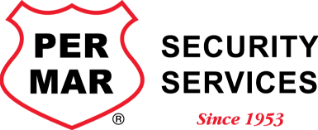3 Ways to Prevent Fires During Cold Weather
February 27, 2019
We still have another couple of months of cold and unpredictable weather in the Midwest. While we wait and dream of warmer weather, keep these winter fire safety at the top of your mind.
1. Electricity & Winter Storms
Electrical fires are one of the leading causes of house fires in the U.S. The good news is that the causes are known and often preventable. In a recent National Fire Protection Association (NFPA) report, it breaks down like this – approximately half of all home electrical fires are caused by electrical distribution (think faulty wiring) and issues with lighting, cords and plugs, and the other half are HVAC, kitchen/cooking or personal equipment related (think space heaters and electronics).
When a winter storm strikes, the electrical fire risk rises substantially. There are a few precautionary measures you can take prior to a winter storm hitting your hometown. First on our list are always monitored smoke detectors and a monitored fire alarm system. This ensures help is on the way if you are unable to react. Next, always assume fallen power lines are energized. Stay away from the area and evacuate your home if a line has fallen on it. Report downed lines to authorities immediately. Along those (power) lines, unplug all appliances and other electronics, such as computers and televisions, to prevent damage from surges caused by lightning strikes. This will lessen the chances of a spark getting inside your home, too.
2. Heat Sources & Chimneys
When you turn up the heat, you also turn up the risk of house fires. Believe it or not, heating is the second cause of home fires. In 40% of cases, a space heater is involved but the number one contributing factor to home heating fires is dirty chimneys. Creosote and other debris must be removed from solid-fueled heat sources and chimneys are the most common source.
Additional factors of causation include proximity issues. Flammable items should be at least three feet from heating equipment (furnace, fireplace, wood stove, portable heater). Accounting for more than half of home heating fire deaths? Upholstered furniture, clothing, mattresses, and bedding. Please include your real, live Christmas tree on that list, too!
The bottom line? Keep your chimneys clean and separate your heat sources from your combustible items. We might be biased, but fire monitoring isn’t a bad idea either.
3. Generators & Candles
Those with portable generators usually consider themselves lucky during a power outage, but there are risks associated. Life-threatening dangers can arise when equipment is used improperly and generators are not exempt. Electrical shock and fire hazards are risk factors to take into consideration when operating portable generators. Carbon monoxide poisoning is also a potential threat, so be sure your carbon monoxide detectors are in proper working order.
Another common home remedy used during power outages is candles. While not as common as other dangers, candles can lead to house fires. And, not surprisingly, more than half of home candle fires happened when something flammable was too close to the candle. Be sure to keep candles at least 12 inches away from flammable items and to blow out all candles when leaving a room or going to sleep. For more candle fire safety tips visit NFPA’s website.
Now that you know the common causes of house fires and when to be most cautious, be sure to check out our Fire Safety Tips for Your Home blog to know what to do during a house fire. And, always remember the fire facts: fire is fast, hot, dark, and deadly. Last and definitely not least, having smoke detectors and a fire alarm (both monitored) in your home can be life-saving; we’ve talked to thousands of homeowners who rest easy knowing their families are Per Mar protected. Contact us for a free quote.
 Careers
Careers Customer Support
Customer Support (800) 473-7627
(800) 473-7627 Contact Us
Contact Us Locations
Locations